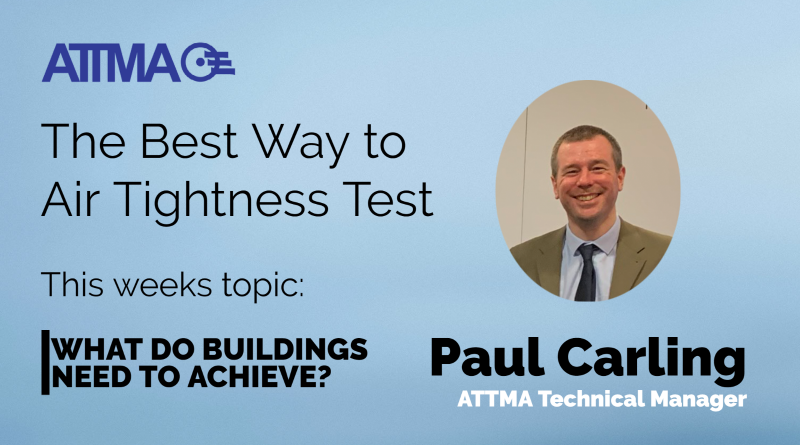In this 6-part series, Chris Milsom (CM), Digital Marketing and Membership Coordinator sat down with Paul Carling (PC), Technical Manager of ATTMA to discuss a range of topics to do with Air Testing.
This section is all about what buildings need to achieve.
CM – Hi Paul. We spoke last week on what needs to be tested, but what do buildings actually need to achieve when being tested?
PC – There are maximum figures that are in the Building Regulations which is a 10 in England, Wales, Northern Ireland. But in Scotland there’s no specified maximum.
CM – Which is on the Level 1 course!
PC – Yes, However it could be anything, so you can put whatever you want in there and this is when they’re tested. That’s the maximum that can go in in there with regard to what they need to achieve.
Now, this is a difficult question because a building can effectively fail and airtightness test, but the EPC can still pass and as long as the EPC passes that part of the building regulations has been met.
Now what the energy assessors usually do is they put a little buffer in the CO2 emissions into the building. So that if there’s any anything that changes in the build, they’ve got a little bit to play with, so it can still pass, like, for example, they could specify a boiler and then the people on site don’t buy that boiler and buy a different one. It might be less efficient, or it might be more efficient. So that’s why they’ve got that buffer in there to handle these changes that occur.
So it’s very difficult to say that a pass or a failed airtightness test is going to fail the building regulations, but the point is to preserve that buffer in case there are any other changes.
It’s always good that if the air tightness test result can beat the design air permeability that is set in the energy assessment and that’s a variable number up to your limiting factor.





